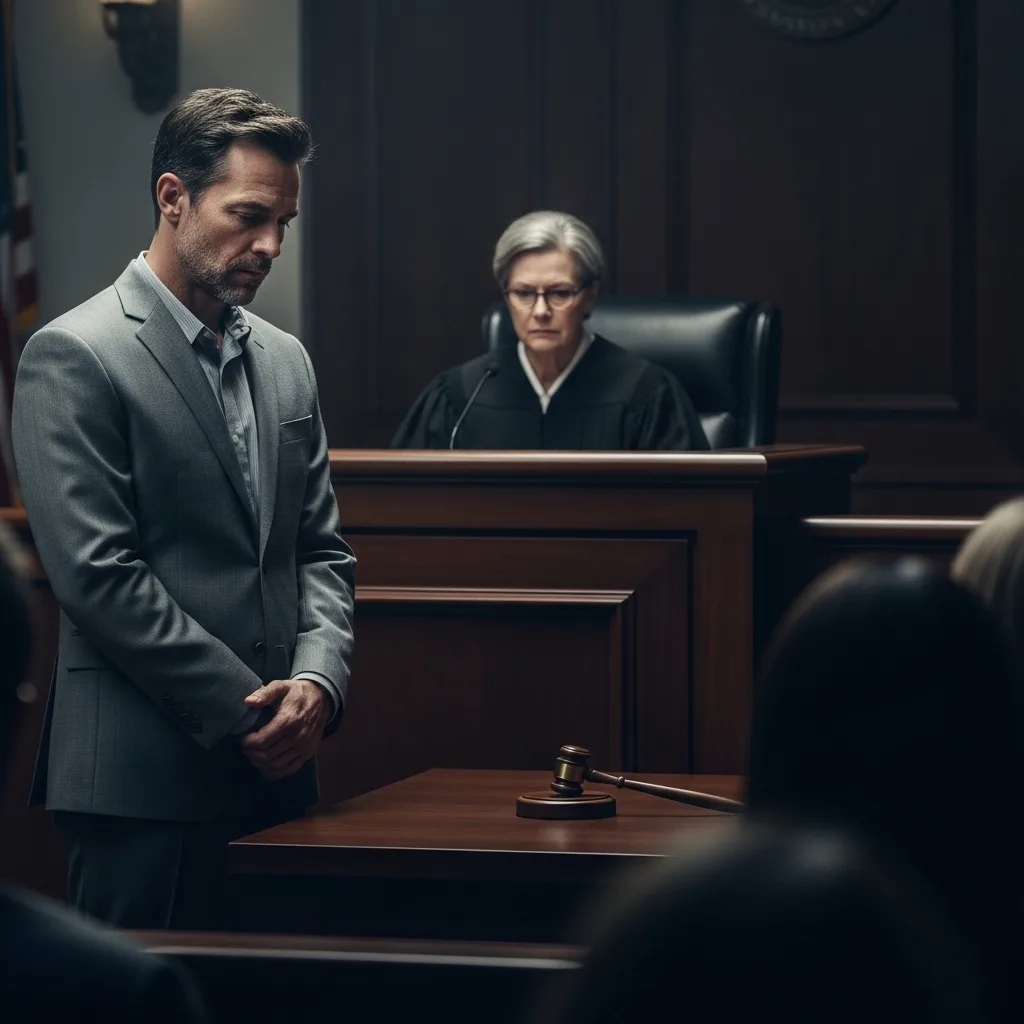

California's Three Strikes Law stands as one of the nation's most stringent sentencing statutes, fundamentally altering the criminal justice landscape for repeat offenders. Under Penal Code Section 667, this legislation imposes severe penalties on individuals with prior serious or violent felony convictions, potentially resulting in life imprisonment for third-time offenders. At H Law Group, we understand the devastating impact these charges can have on defendants and their families, which is why we're committed to providing aggressive defense strategies and comprehensive legal guidance.
The Three Strikes Law operates on an escalating penalty structure designed to severely punish repeat offenders:
When you receive your first conviction for a serious or violent felony, you acquire what's known as a "strike" on your criminal record. While this initial strike doesn't immediately impose enhanced penalties, it sets the stage for significantly harsher sentences if you face future felony charges.
If you have one prior strike conviction and are subsequently convicted of any felony, whether serious, violent, or non-violent. California's sentencing scheme doubles your prison term. For instance, if a standard sentence for a particular felony is three years, a second striker would face six years in prison.
consequences for second strikers include:
The most severe consequences arise with a third strike conviction. Under current law (as reformed by Proposition 36 in 2012), you face 25 years to life imprisonment when:
However, certain exceptions can trigger third strike penalties even for non-violent felonies, including:
Understanding which crimes qualify as strikes is crucial for anyone navigating California's criminal justice system. Strikes fall into two categories:
Importantly, juvenile convictions can count as strikes if the defendant was at least 16 years old when the crime was committed, and out-of-state convictions may qualify if they contain the same elements as California strike offenses.

The most effective defense often involves demonstrating that you're not guilty of the current felony charge. If we can secure a dismissal or reduction to a misdemeanor, the Three Strikes enhancement becomes irrelevant. Our team conducts thorough investigations, examining:
Prosecutors must prove the existence and validity of prior strike convictions using court records, prison documents, and fingerprint evidence. We scrutinize these records for:
Named after the landmark case People v. Romero (1996), a Romero motion asks the court to dismiss prior strike convictions "in furtherance of justice." Courts consider factors such as:
The 2012 passage of Proposition 36 significantly reformed California's Three Strikes Law, addressing concerns about disproportionate sentences for non-violent offenses. Key changes include:
Proposition 36 created a resentencing mechanism for inmates serving life sentences for non-serious, non-violent third strikes. Eligible defendants can petition for reduced sentences unless the court determines they pose an "unreasonable risk of danger to public safety."
California's One Strike Law (Penal Code 667.61) imposes severe sentence enhancements for certain sex offenses committed under aggravating circumstances. Unlike the Three Strikes Law, these penalties can apply to first-time offenders, potentially resulting in 15 years to life imprisonment.
Qualifying offenses include:
Aggravating factors that trigger enhanced penalties:

Third strike defendants sentenced to 25 years to life become eligible for parole consideration after serving 25 years. However, parole is not guaranteed and depends on numerous factors:
The parole process is complex and often requires experienced legal representation to navigate successfully.
Various constitutional challenges to Three Strikes sentences have reached the courts with mixed success:
Some defendants have argued that lengthy sentences for relatively minor offenses constitute cruel and unusual punishment. While most courts have upheld Three Strikes sentences, successful challenges typically involve:
Challenges based on due process violations may include:
California continues to debate the effectiveness and fairness of the Three Strikes Law. Recent legislative proposals have suggested various modifications:
If you or a loved one is facing potential strike charges, time is of the essence. Consider these immediate steps:
California's Three Strikes Law represents one of the most serious legal challenges a defendant can face. While the law aims to protect public safety by deterring repeat offenders, it can also result in disproportionate sentences that destroy lives and families. Understanding your rights and options is crucial, whether you're facing your first strike or potentially your last.
At H Law Group, we're committed to providing the aggressive, knowledgeable representation that Three Strikes cases demand. We believe that everyone deserves a vigorous defense and a fair chance at justice, regardless of their past. If you're confronting these serious charges, don't face them alone, contact us today for a confidential consultation about your case.
Remember: in the high-stakes world of California criminal law, the quality of your legal representation can make the difference between freedom and a lifetime behind bars. Choose attorneys who understand both the law and the human stakes involved in these critical cases.
References
Penal Code § 667 – Habitual Criminals (Three Strikes Law)
Penal Code § 1170.12 – Three Strikes Sentencing
Penal Code § 667.5(c) – List of "Violent Felonies"
Penal Code § 1192.7(c) – List of "Serious Felonies"
People v. Superior Court (Romero) (1996) 13 Cal.4th 497
Please note that the information provided in this article is for general informational purposes only and does not constitute legal advice. This content was last reviewed and updated by our legal professionals in October 2025 to reflect the current state of the law, including the significant reforms of Proposition 36. California's Three Strikes Law is exceptionally complex, has severe sentencing implications, and is subject to change. The application of this law depends heavily on the specific facts of your case and your past criminal history. For personalized advice from an attorney regarding your specific situation, we strongly encourage you to contact the H Law Group for a free, confidential consultation.
California’s Three Strikes Law imposes increasingly severe prison sentences on repeat offenders convicted of serious or violent felonies, potentially leading to life imprisonment on a third strike.
Yes, in certain cases. While Proposition 36 reformed the law to focus on violent or serious felonies, some non-violent crimes—like major drug offenses or crimes involving firearms—can still trigger a third strike.
A Romero motion asks the court to dismiss a prior strike in the interest of justice. Judges may grant it based on the defendant’s background, time since past offenses, or current circumstances.
Yes, if the juvenile was at least 16 years old at the time and the offense qualifies as a strike under California law.
Remain silent, avoid speaking to law enforcement without a lawyer, and contact an experienced criminal defense attorney immediately.